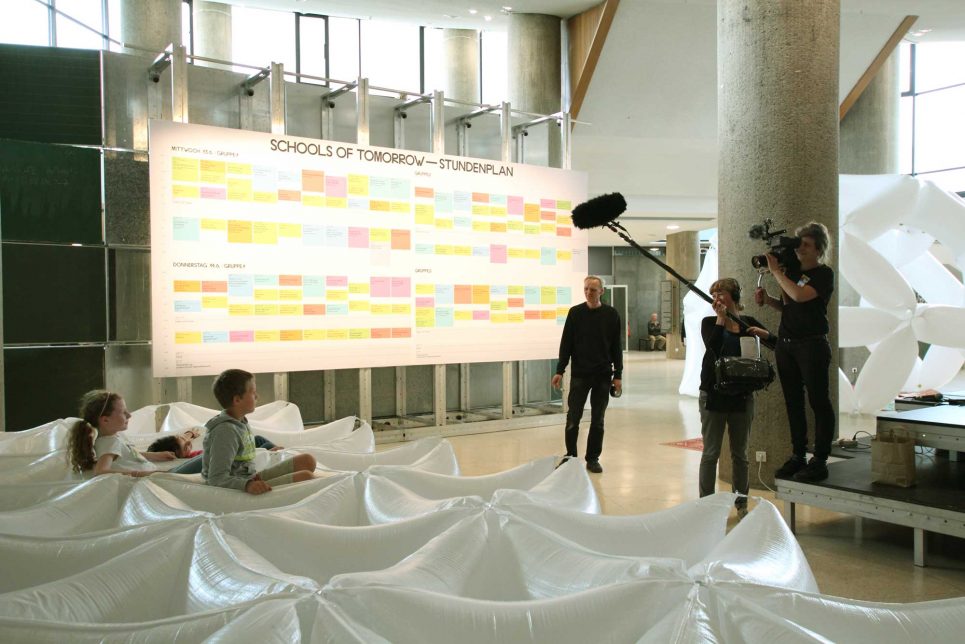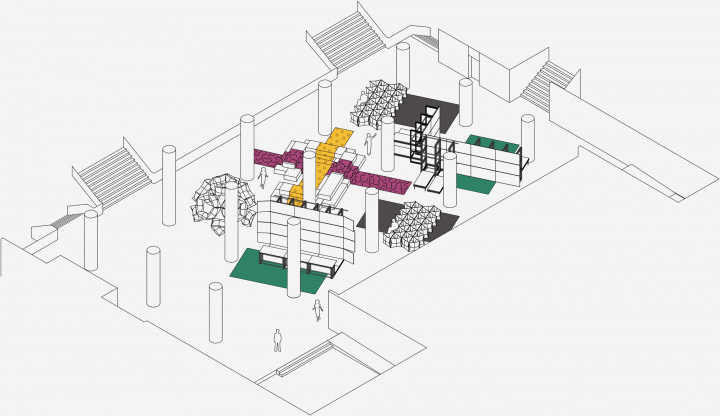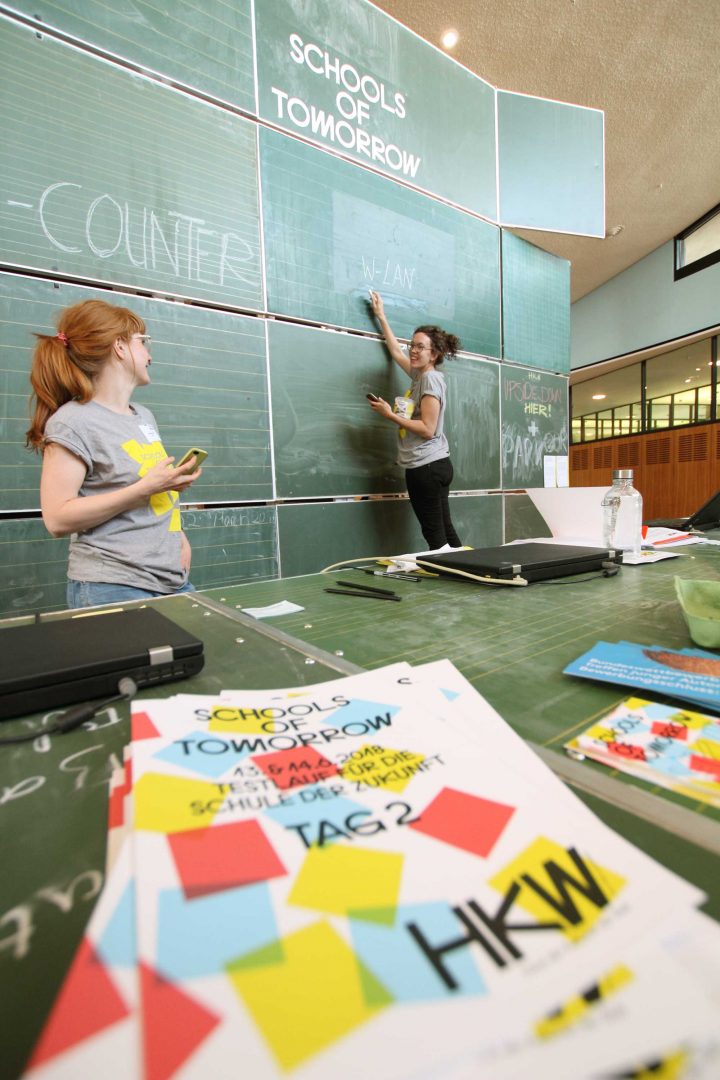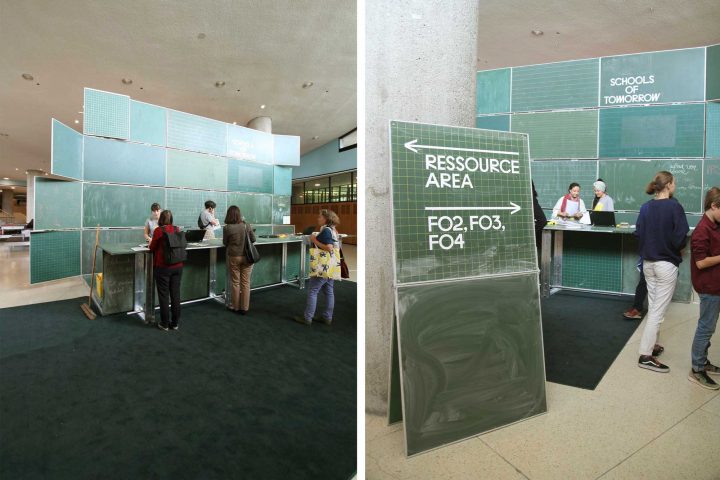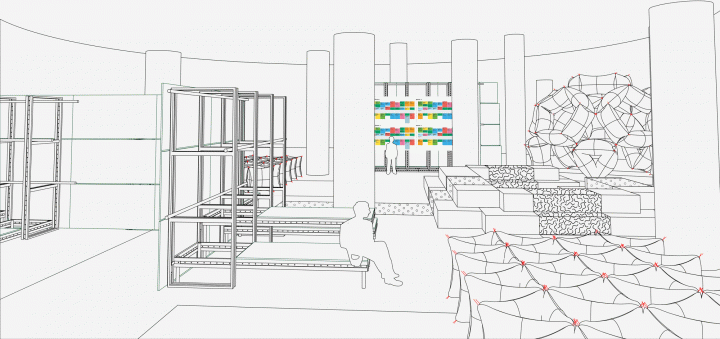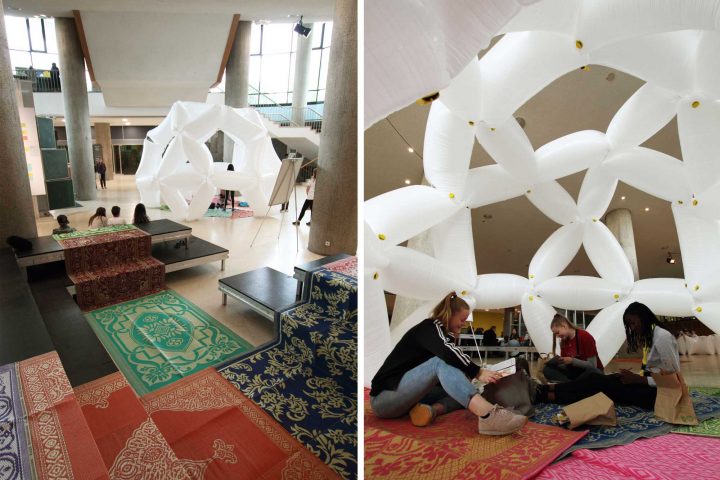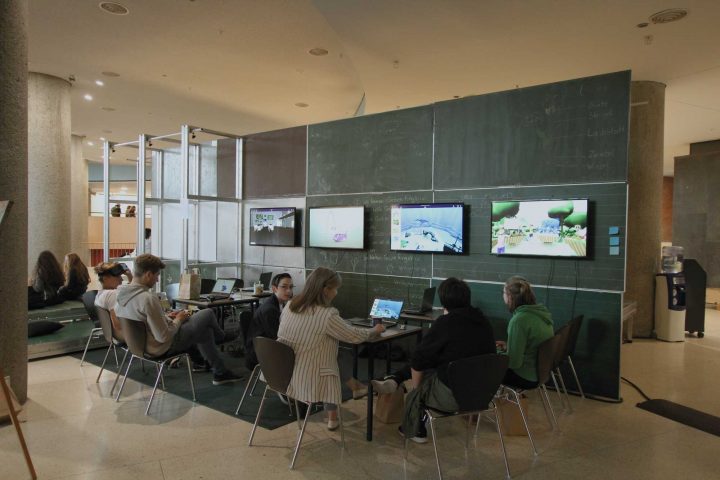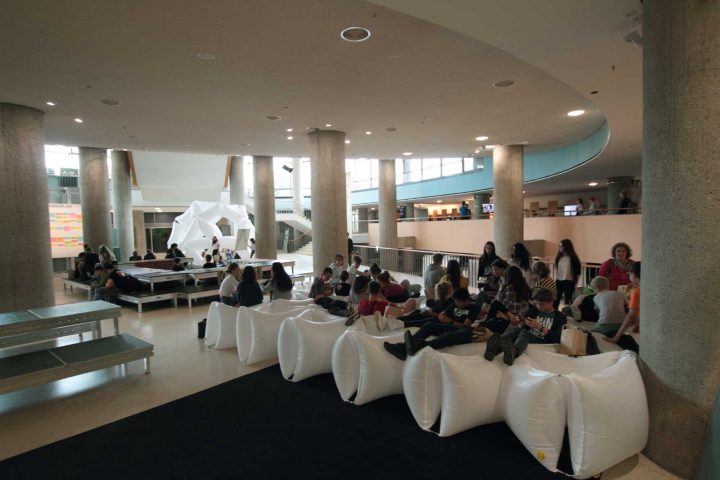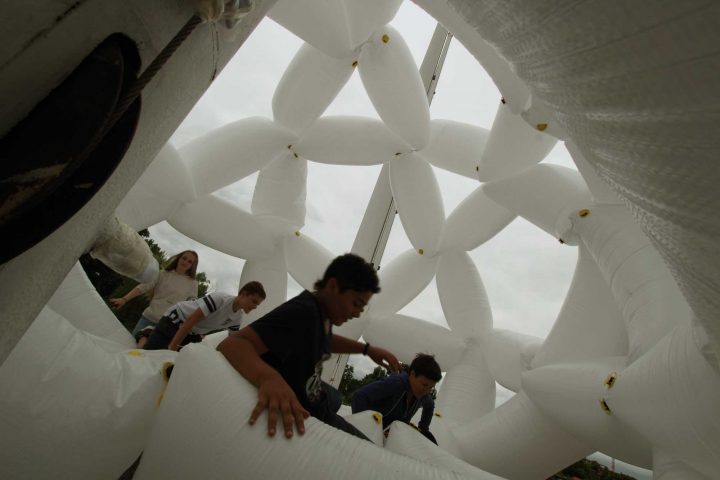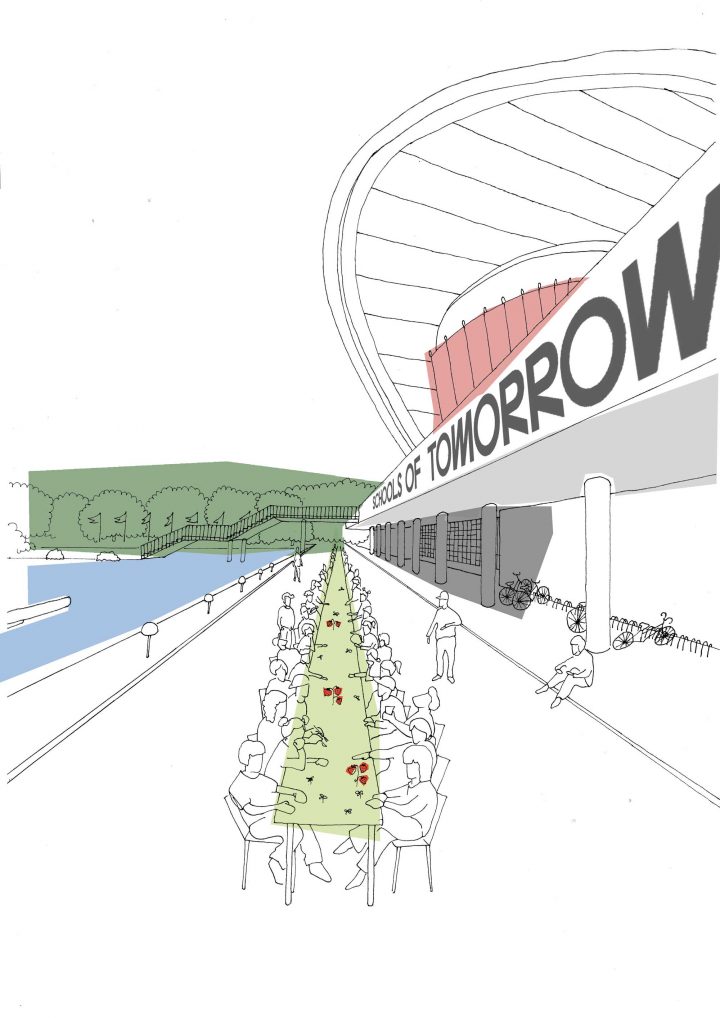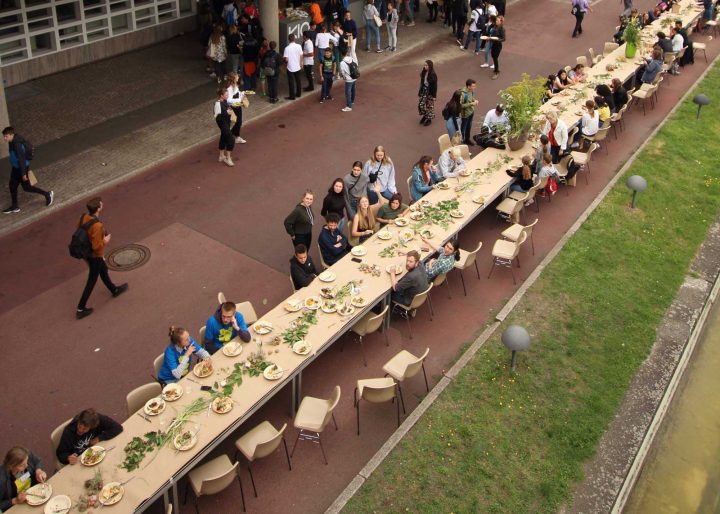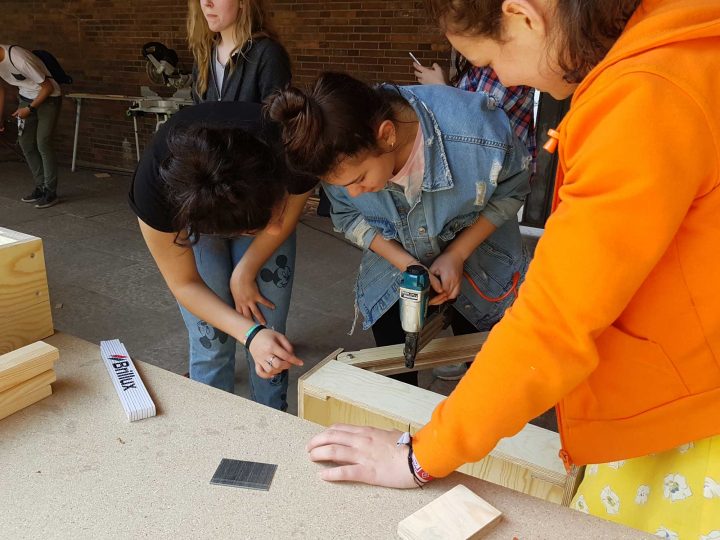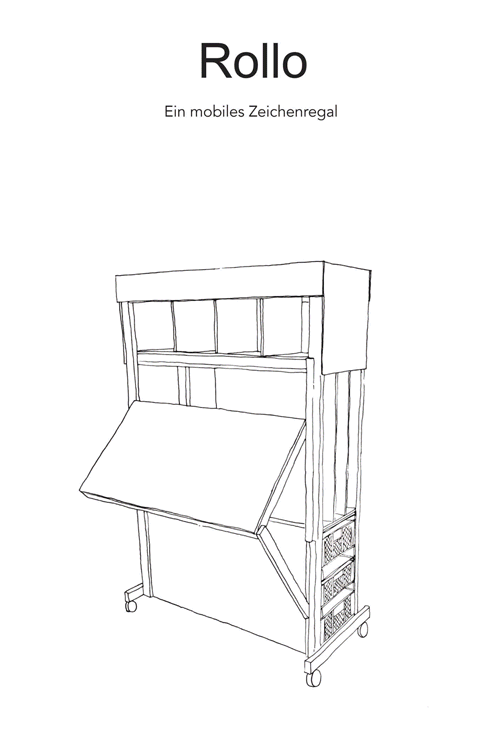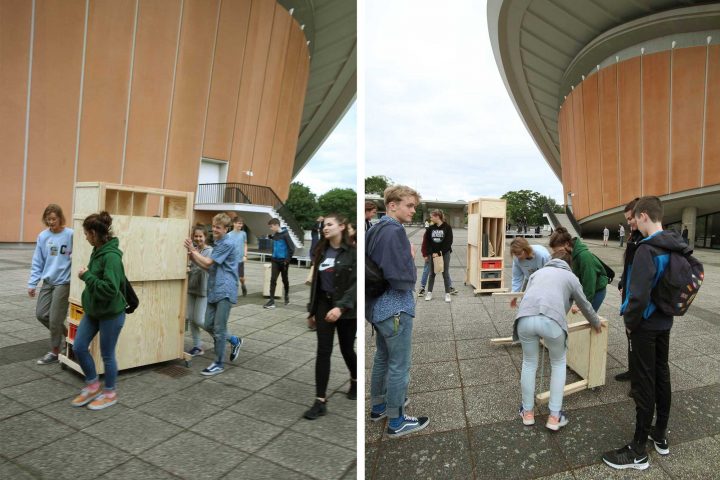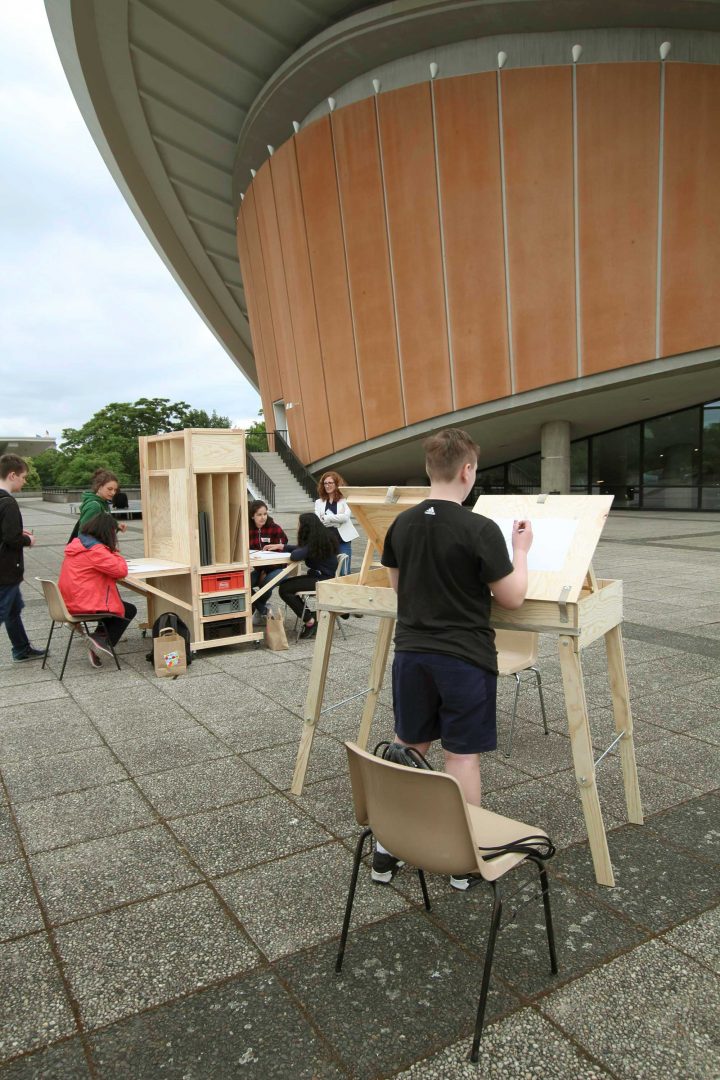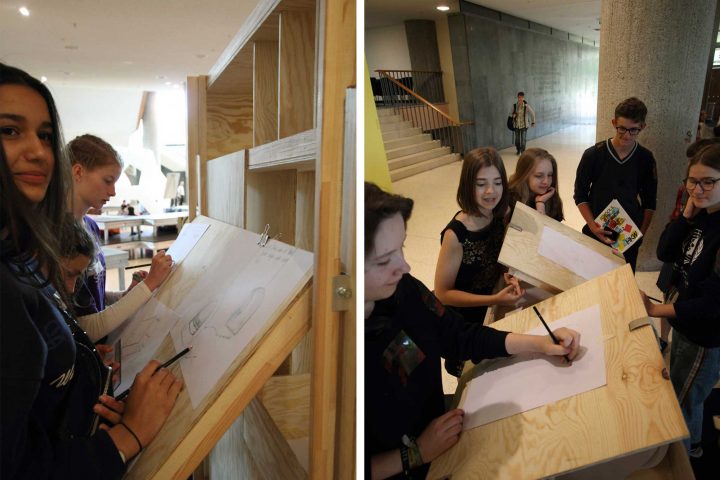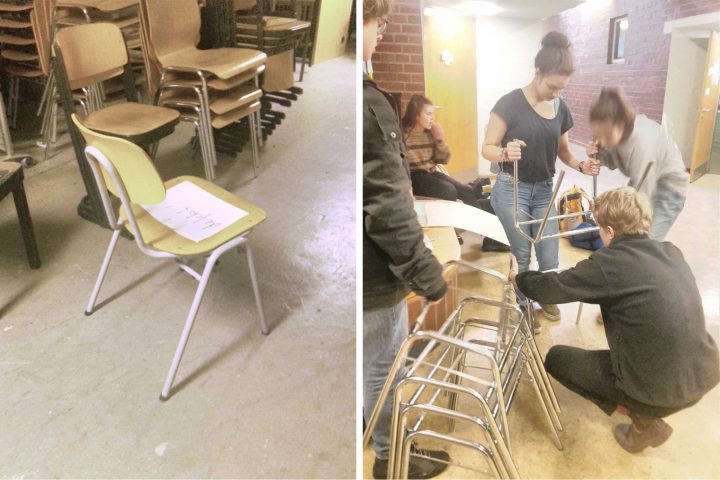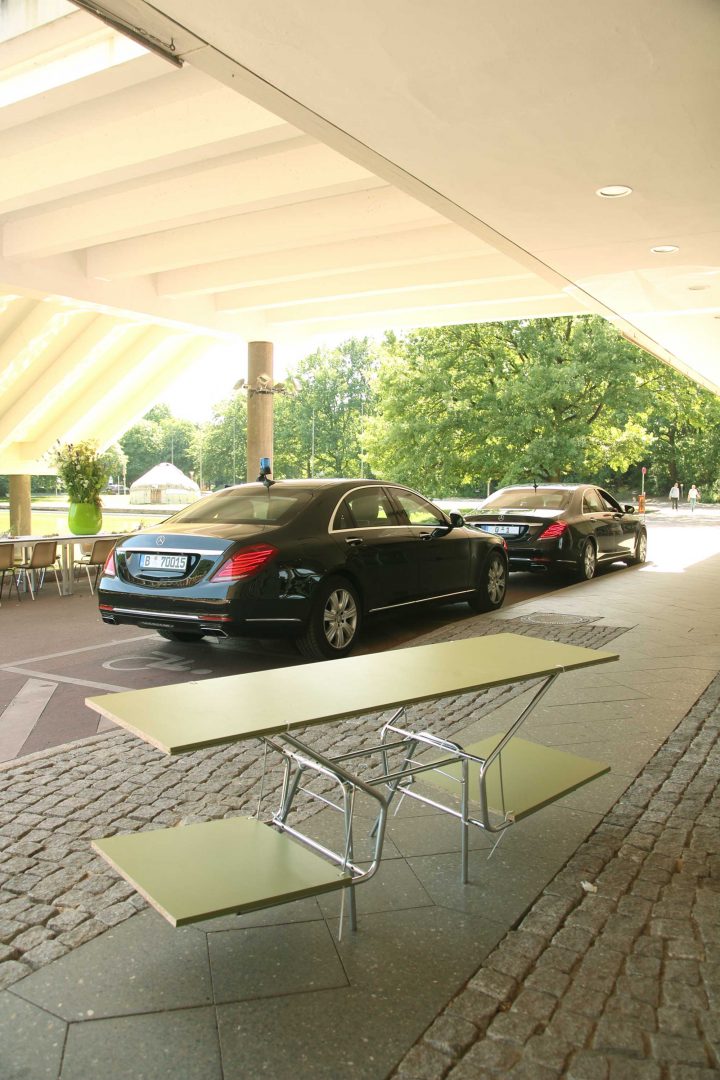Schools of Tomorrow 2018
13.+14.06.2018
Test Run for the School of the Future
concluding conference for Schools of Tomorrow
within the framework of 100 Jahre Gegenwart
pictures and videos of Schools of Tommorrow in the HKW Mediathek
In June 13.-14., 2018 the HKW was transformed into the School of Tomorrow. raumlabor created an installation for the Foyer, a place for the students to learn, create and meet.
The Project Schools of Tomorrow at the Haus der Kulturen der Welt reflects on the educational system, researching new models of knowledge exchange based on a participative, interdisciplinary approach.
Schools are laboratories for tomorrow’s society: but how can they become places where a new future emerges?
Since 2017, students, artists, teachers, and academics have been exploring the question of how schools can be collectively transformed. The ideas from everyday school life and concepts for educational praxis which have been addressed since May 2017 in a opening Conference, in 21 school projects, and in an ideas competition, were brought together in June 2018 in a concluding program: Test Run for the School of the Future.
For two days 500 students, teachers and experts from different disciplines came together to investigate the possibilities of new learning methods.
raumlabor transformed the foyer into a experimental schoolyard, it welcomed the students in the morning and from here they could regroup and come together throughout the day to exchange ideas and experiences. To foster the idea that leisure and learning are not that far apart, some of the lessons were held within the installation.
The central component part of the installation was recycled chalkboard. For the welcome desk several panels were combined into a large wall, to scale the usual sight of the known and question how much information can actually be transmitted through traditional learning methods. The panel wall in the back of the room was filled with topics around new media. How can digitization be integrated in our dusty school systems? The blackboard as a symbol of yesterday, overlapped with the media of today.
An arena in the middle of the foyer created room for discussion and two relaxation islands made of inflatable bags invited settling in during the breaks and socialising.
When thinking about the future of our society, sustainability and conservation of resources are key issues, so all the materials used are recycled and reusable.
communing around the lunch table
Lunch on Wednesday was transported outside in front of the main entrance of the HKW. raumlabor provided a long table, scanning the length of the facade, to ensure that all students could sit around one table.
school desk reloaded
In collaboration with the Bertha von Suttner Gymnasium raumlabor developed two days of experimental school lessons that were presented and taught in the HKW.
How are our learning habits related to the furniture we’re using? Are Tables and Chairs influencing our concentration, our behavior and our results? The approach was to examine how the design of furniture can change and influence Art Class.
During several lessons at the school, the students got to know the process of furniture design, including sketching, making models, material research and documentation.
Their ideas and models were turned into two prototypes, Rollo and Trolli, which were built together on the two project days. Rollo and Trolli contain a lot of storage space and are designed be flexible and compact.
The mobile workbenches motivate leaving the familiar four walls of the classroom. Now lessons can take place anywhere, in the yard, in the canteen, maybe even in the staff room. Or outside.
But what do we even want to learn? Isn’t the city itself the best teacher?
During the Test Run our Students became the teachers. Still looking for the furniture of the future, questioning the habits that haven’t changed in decades, we continued the process of designing the future furniture for schools. Together with the mobile Workbenches we strolled through the HKW to set up our classroom in differnt places. Inspired by their environment the students sketched. Back at the table they also had the opportunity to build models.
Material research was a central part of the design process, with the central focus being on finding recycled and upcycled material. The students found discarded furniture in the cellar of the school. Chairs and Tables that were either broken or just too old, long forgotten and destined to be thrown away.
The students started buliding new compositions out of the old. Chair frames became an under-construction for a Table, for the top an old closet door was used. Cable ties and a drill were the only available tools and improvising became a design method.
